Polar RS 800 SD vs Polar 625x
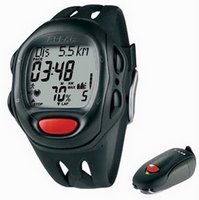
For many reasons, I utilize a heart rate monitor in every workout I do. Perhaps I’ll write an article in the near future about the benefits of heart rate training, but a heart rate monitor keeps me focused, it allows me to train in my exact zones for optimal training effect (determined by lab testing), and gives me immediate feedback about the effort I’m giving. Two of the best heart rate monitors for runners or triathletes are the Polar RS 800 SD and the Polar 625x.
I’ve used the Polar 625x since 2005 and didn’t think that there was anything better. It is a big watch but it is extremely durable, and has a huge display with big numbers. On top of the regular heart rate and calorie information, it also provides an altimeter reading, temperature, run speed, run distance, run pace, and a full run-down of all information with averages when you review your workout. The 625x can also double as a cycle computer with the addition of a wireless speed and cadence sensor (bought separately). I still love this device, I think it works nicely for triathletes/duathletes, but my plan this year was to concentrate on my run more so why not make the switch to the RS 800 SD to get more running info (whether I make use of all of that info or not).
A few years ago I got the chance to try the Polar RS800 before it hit the market and was impressed with its performance and all of its features. However, I still didn’t truly appreciate all of the nuances and features of the device until I bought one and used it on a consistent basis. At that time I believed it was the best running computer/heart rate monitor that you could get your hands on and definitely believe that is the case after using it for the past four months.
If you are considering either of these devices, I suggest the following. If you are the kind of person that loves analyzing all of your data on the computer, wants every possible bit of running information you can get, and wants to design your own workouts and have them then available on your wrist unit, then go with the RS 800 SD (go with the GPS version if you want speed/distance data for other sports too). There is simply nothing better out there, it is the ultimate item for a runner to pimp themselves out in. But if you don’t need all of that detailed/extra run information (cadence, stride length, etc.) or need to have your daily workouts laid out for you on your wrist unit, then go with the 625x. It still gives you everything you would need, just not to the extreme level of the 800 SD. I’ve added more specific thoughts and listed the good and the bad on each device below.
Hope this helps in determining your selection.
Roger
Polar 625x
The Good
Ø Sturdy wrist unit with huge display (may be too big for some women’s wrists).
Ø Wrist unit battery can be changed by yourself but Polar recommends you send it to them.
Ø Sturdy and durable footpod that uses one AAA battery (can sometimes experience transmission issues in extreme cold).
Ø Personalize home display (own logo, name or whatever).
Ø Run speed/pace and distance.
Ø Heart rate (current, min, max, average), calories, altitude.
Ø Fitness testing (OwnIndex – VO2, OwnOptimizer – Determines current training state – recovered, etc.).
Ø Very useful Polar Precision software – keep track of run time, run distance, cycling time, heart rate info, weight, mood, personal daily notes, schedule races, and tons more.
Ø Quick and easy IrDA download/upload interface with computer. If you computer does not have a built-in IrDA interface you can buy one (I bought one for less than $10 online).
Ø Add a Speed and or Cadence Sensor for Cycling information (can keep track of 2 separate bikes).
Ø Water resistant to 30 m. Therefore, it’s an excellent watch for triathletes wanting all their information in one file (swim – just time and not speed/pace obviously, bike – with speed/cadence sensors, and run – with foot pod). Heart rate information can be gathered during the swim provided that you are wearing a wetsuit.
The Bad (if there are any)
Ø I like size of the wrist unit but some find it a bit too big.
Ø For the cycling features, you might have some transmission issues with the wrist unit and the speed and cadence sensors. You really have to place the wrist unit in the perfect position.
Ø Some may find that the Foot pod is too big but it really isn’t all that noticeable.
Polar RS 800 SD
The Good
Ø Lighter, more ergonomic watch (futuristic look and more women friendly size) – 46 grams.
Ø Lighter, smaller S3 Stride sensor (footpod device) with automatic shutoff – 21 grams.
Ø Self change batteries (wrist unit, transmitter, stride sensor).
Ø W.I.N.D. (Wireless Integrated Network Device) technology – better transmission.
Ø Design and upload workouts from computer to wrist unit (21 workouts at a time).
Ø Personalize workout displays (pick exactly what you want to see – 3 different workout displays).
Ø Personalize home display (own logo, name or whatever).
Ø Run speed/pace, distance, cadence, stride length, run index.
Ø Heart rate (current, min, max, average), calories, altitude.
Ø Time spent in training zones.
Ø Recall/Call up workout plans for the day, training program (past workouts and those to come), and previous workout files (weekly and daily log).
Ø Fitness testing (OwnIndex – VO2, OwnOptimizer – Determines current training state – recovered, etc.).
Ø Very useful ProTrainer 5 software – download/upload from wrist unit to log workouts, keep track of run time, run distance, cycling time, heart rate info, weight, mood, personal daily notes, design workouts, schedule races, design own watch logos, and tons more.
Ø Quick and easy IrDA download/upload interface with computer. If you computer does not have a built-in IrDA interface you can buy one (cheaper not to buy the Polar one).
Ø Compatible with adidas fusion shoes (stride sensor fits in mid-sole cavity) and clothing (transmitter clips into clothes).
Ø Keylock – no more accidental pressing of buttons to mess up your weekly workout tally.
Ø Water resistant to 50 m therefore a great monitor for triathletes too (provided you don’t need your cycling information integrated in one file). However, if you get the RS800 G3 which utilizes GPS, you can get speed and distance for any sport you want. Plus the GPS sensor is water resistant to 20 m.
Ø Can keep track shoe usage/mileage on 2 separate pairs of shoes.
The Bad (there really isn’t any but here goes)
Ø Three different batteries for the wrist unit, stride sensor and chest strap transmitter. Some are hard to find in stores. I found a bunch on ebay and bought 20 batteries for the price of one.
Ø No more wrist unit to transmitter function (HeartTouch) as in the 625x. This function (bring wrist unit up to the transmitter) on the 625x is handy during dark conditions where it lights up and all the current data is quickly given without pressing any buttons.
Ø The WIND technology ensures excellent transmission and eliminates interference from other monitors but this means it will not work with workout equipment at the gym that is Polar compatible. Not huge but some people like so see that HR info show up on their screens, and if your Spin class uses Lemond bikes the HR information will not show up on that either.
Ø Can’t get speed/distance info on the swim or bike, but with the GPS version you can.
Ø Some may say price, but this is the premier running watch/monitor/computer on the market.




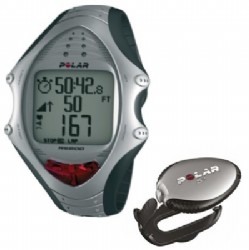

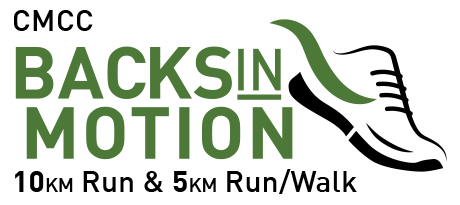



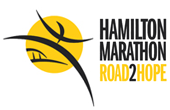



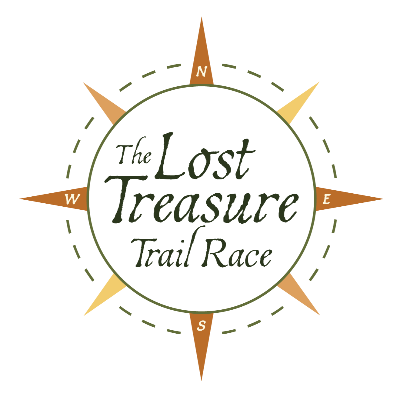



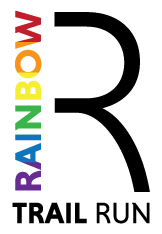



I have the 800sd and love this watch for all its functions, one thing I have been having issues with is the durability. The watch has been returned once because it couldnt read the heart rate monitor, new watch recieved under warantee. I have just got the watch back and have been training hard! ooopa now it has to go in because of something flyin around inside the watch so I dont know how durable this watch is. I hope I just got a lemon or two and looking forward to the 3rd to see how it does………
Happy trails
So far so good for me.
Last week I dropped it hard right flush on the face of the watch.
I was expecting a big crack or for it to be shattered for sure. Not a scratch.
This is also why I like the 625x. It is a beast.
Hi Roger,
Great review. I have the RS800G3 and picked up the foot pod as well. It is a really good watch and agree with all of what you say about it. I have found that I tend to use the foot pod over the GPS as it is much more convenient. I kept my 720 and use it now as my bike computer. Given to do it over I would have probably just gone with the running version.
David I also am having problems with the durability of the watch. I just sent mine back because it was fogging up on the inside of the face. Hopefully when I get it back it will be good to go.
Even with my recent issues I absolutely love this watch.
I love the foot pod too but I was considering getting the G3 Sensor for racing. That way I can get speed info for the bike and run all in one file (swim too maybe). How is the battery life and accuracy? It appears to be fairly light for its size. Any issues with the G3??
Nice comparison review. I currently have the S625X with pod, cadence and speed sensors. I’ve had this set forever and am still running on the original batteries (except fo the pod which goes through a lot of AAAs and constantly needs to be recalibrated). I am in the market for an upgrade, but am not convinced there is a watch out there that really focuses on use cases rather than functionality.
Example. As we all know about the S625X, you have to stop the watch to switch to another sport to collect and use the appropriate data (i.e. biking vs. running). I have yet to remember to do this in all the triathlons that I’ve been in. Basically, I just end up using the basic heart rate setting and hit the big red button for simulating lap times of each segment of a race.
I would love to see a customizable watch that allows you to program or select which sports you are getting ready to perform, and toggle between them at the press of a button (including T1 & T2). Have a racing mode and training mode would be awesome. Wouldn’t it be great if the watch helped you out with your racing strategy or switched automatically based on the gear it was synching with (swiming, biking or running)? Tell you to reduce exertion to prepare for the next stage (i.e. Swim & T1to bike), increase cadence on the bike before T2 to the run to get your legs ready.
I know this is a tall order, but it looks like I’ll compromise what I already have to get a new model or just switch to the basic models that are sport spacific in order to be more cost effective. Hasn’t any of the elites worked with a watch sponsor yet to make things real easy and useful?
For the IT engineering geeks designing these watches, have you heard of service oriented architecure yet?
Here’s a summary of feedback on my S625X set.
GENERAL USAGE:
+ Very rugged and last forever
+ Good for sport specific training
– Requires recalibrating of altitude
– Temp sensor gets you in the ball park, but tends to rise due to your body temp rising
SWIM:
+ Last in the pools even though Polar doesn’t recommend it
– HR only measurable when using a wet suit
– Nothing for distance, pace or stroke counts
T1 & T2:
+ easy to push big red button going into over the timing mats
– have to stop watch to switch to biking
– have to stop watch to switch to running
– returning on bike to T2 ends up being kind of futile; hit red button, but am still in biking mode
– can’t really leave watch on wrist if bike was set up for real wheel trainers. Sensors don’t have far ranges.
– can easily forget to hit big red button leaving T1 to bike course
BIKE:
+ love having a HRM matched to biking data
+ Altitude data is good to compare to speed and HR
– Typically, I have to calibrate/offset the altitude curve (via the software) to have equal start and finish readings
– not sure how or if I can program different HRM zones for biking vs. running
– biking data is not as convenient as regular bike computer.
– I usually end up leaving the watch on my wrist and just use my basic Cat Eye bike computer during a race or on brick work-outs
– doesn’t seem to remember the last settings i’ve used and i end up toggling through the reading types (could be user training need)
RUN:
+ Great HRM watch for run training
+ No need to worry about trees or bad weather to get distance / pace readings from pod
+ don’t really notice or feel pod on shoe
+ love the heart touch for reading watch during early morning or late evening runs
+ easy to read
+ nice lap time flash readings during mile pacing
– I’m convinced that Polar has the manual calibration adjustment pocedure wrong. I found that the adjustments would swing the error 200% in the other direction. I cut the adjustments in half to get more accurate readings.
– Foot pod uses a lot of batteries
– foot pod needs continuous calibrations to get distance correct. This may be due to a change in your being in shape (i.e. longer and stronger strides)
– tend to see difference in distance data depending on how snug the pod is on your shoe
Thanks again! Anyone with an insite to Service Oriented Triathlon Watches, let us know!
Chris
I agree with everything you have here. It was very hard to switch over to the 625x but I loved the extra running features of the RS 800SD and never used the cycling features of the 625x. I always used the manual calibration and came up with a number that seems to work for me. I know some others who have to keep tinkering due to changes in running stride, etc.
I also have the Garmin 301and it has a Mulitsport mode. Everytime you hit the lap button you get splits for that segment, and records your T1 and T2 as well. I was thinking of getting the G3 sensor to use with my RS800 for races so I can get info for everything but the cost may dictate that I stick with the garmin (which I’ve used for longer races).
I’ve mentioned the idea to some “Polar people” the idea of developing a “mulitsport” to give data in each sport. I can only hope that they are going to come out with one. Maybe if we all keep bombarding them with this they will get one out soon.
I’ve given up on Polar because of their inability to stand by their product . I have a Garmin Forerunner 405 and I love it! GPS technology has all the functions of the aforementioned plus it hooks up to an online personalized data system where you can store your workouts and share with others. Charts for HR, altitude and pace are there. The kicker for me was that it hooks up to Google maps where you can actually see your route. A far superior product.
I am considering an 800 . . .
I had the 625x when it hit the streets and loved it. However, it had one fatal flaw – the backlight. The backlight was totally worthless and at the time I was running a lot in the dark.
I got the 200sd and that soured me on Polar. It was a defective design that would lock up and reset often. I went through 4 of them. Plus if you search, many had this happen. Polar always replaced them, but never admitted there was an issue. I did not want something that died on a run or race.
I then went to Garmin 305 and have used it ever since. Love it.
But part of me wants the 800. For the following reasons:
The footpod gives MUCH more accurate real time pace info than GPS and I miss that.
The 800 shows cadence, which is very cool. I work on keeping near 90 and I use a metronome MP3 file on my ipod. I would like to be able to look.
Polar HRM chest straps are light years ahead of Garmin.
However, reading some durability issues with the 800 scares me right away.
I too love the 625x. I still believe it is their best all round/multisport monitor. But the RS 800 is definitely the best running specific HR monitor out there. For a runner needing immediate and accurate information such as speed, cadence, etc., this is it. I use my RS 800 as a watch and have beat it up pretty good and still no problems. With the price tag of this monitor, I’d be the first to complain if I had any problems.
I do have a older Garmin 301 that I use regularly too. For long runs, rides or races, I usually make use of it too so I get the best of all worlds. I will admit that I have an eye on the Garmin 405. Its slimmer style to previous versions of the Garmin is a huge plus, and there are a ton a cool features that are too plentiful to mention here. And I agree they have to improve their chest straps. Since my 625x is mostly sitting there and collecting dust, I’ll likely sell it along with the Garmin 301 and pick up a 405. But I will still use the RS 800 as my main device.
Good luck with your choice. I think you will be happy with either the RS 800 or the Garmin. You just have to make your selection based on all of the features that you are looking for. ie: run cadence.
I agree with Roger concerning RS800SD. I have it since May and I find it very useful and reasonably durable.the S3 battery ran out after 85 hours of using (the one I got with the watch). Probably the second one will last a little bit less because the cold weather is coming and everybody knows that cold drains the batteries.
Since I calibrated my S3 on a track, it is very reliable. On 10 K it was off 30 to 40 meters (several times), which is less than I percent.
The red button that is sometimes stubborn, but generally it works fine. The altimeter is occasionally wrong, but anyways, I don’t use it. The software that comes with this watch (Polar Protrainer 5 or PPT5) is a big helper,especially to program the workouts with phases. It is really easy and powerful and it helped me a lot to beat my PR on 5K and 10K.
Roger wrote: Ø Can keep track shoe usage/mileage on 2 separate pairs of shoes. – I would add that it can keep track of three pairs of shoes.
– IrDA comes now in the box with the recent versions of the watch.
– OwnOptimizer is a great feature – no more overtraining (if one respects the state indicated in OwnOptimizer ). Instead of measuring my pulse every morning to see if it is 10% or more beats over my normal HR, I just start the OwnOptimizer and read in plain English whether I am recovere or not).
– And, yes, the cadence is the law! As I am adept of Jack Daniels, I try to keep 90 and I can see it anytime on my watch. It helps a lot in running economy.
All in all – great watch and HRM, much more precise then my old Timex (no more HR of 240!).
I was also scared because all the negative comments about its durability, but Garmin 305 has the same number of unsatisfied users, so it is not a big deal. It’s just luck or lack of it 🙂
Update:
Thanks to Polar’s lack of software for Macintosh computers I had to let my RS800 go. In its place I got the Garmin 310XT and I love it. It is everything I need and more. Picking up Powertap readings was the clincher for me.
I still have old dependable Polar 625x to bring on trips and forest runs. But mainly it has now become my swimming watch.